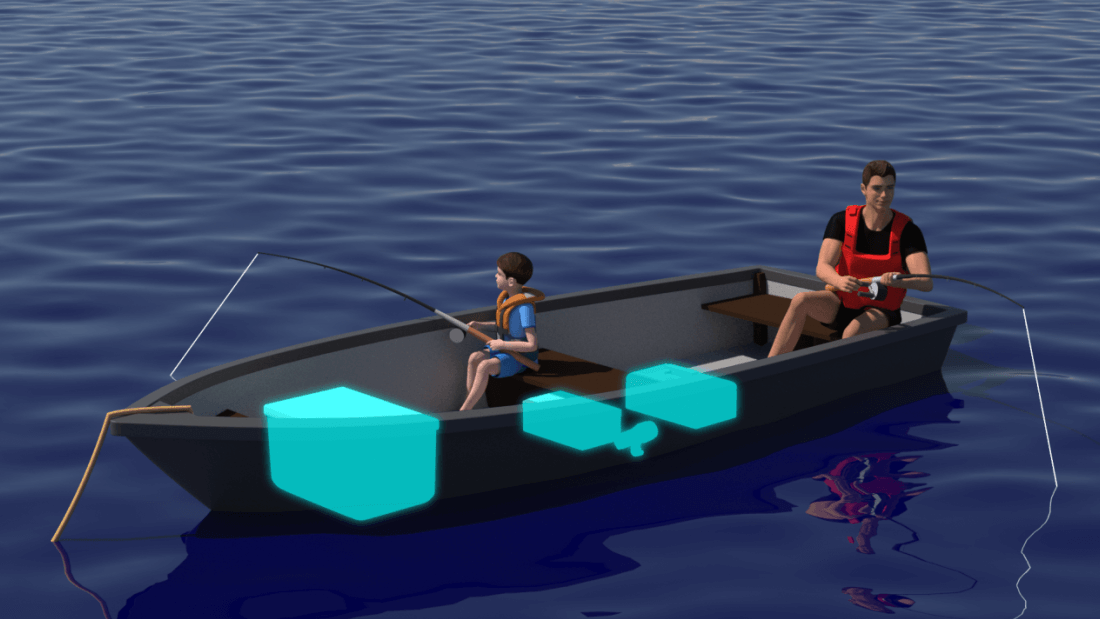Boat Capacity Plate
Boat builders must comply with Federal law by putting a capacity plate in sight of the helm (steering area) on motorized monohull boats less than 20 feet in length.
This plate displays three important items:
-
The maximum persons capacity (XX persons or XXX pounds).
-
The maximum carrying weight - persons, motor & gear (pounds).
-
The maximum horsepower recommended for the boat.

Special care and attention is especially needed when loading small boats under 16 feet in length.
Owners of PWCs or other boats without capacity plates should reference the owner's manual and/or state laws.
If you own a boat that was built prior to the Federal law mandating capacity plates or have a homemade boat, the following formulas can be used to determine safe loading capacity.
|
Formulas for Safe Loading |
|||
| Horsepower Capacity: for small, flat-bottom boats: Multiply boat length (in feet) times transom width (in feet) |
Person Capacity: Average weight per person is 150 lbs. |
||
|
If answer is: |
Maximum HP is: |
(Boat length |
= |
| Note: for flat bottom, hard chine boats with an answer of 52 or less, reduce one increment (e.g. 5 to 3) | Boat length and width are measured in feet. Round fractions down to next lower number. | ||
Always check the capacity plate to make sure you are not overloading or over-powering the boat. A motor larger than recommended will make the stern too heavy and can cause the boat to flip. The transom will ride too low in the water and you could be swamped by your own wake or a passing boat's wake. Your boat will not sit properly in the water and will be difficult to handle. If your boat is loaded beyond its capacity, it will be difficult to control.
Too many people (and/or gear) will also cause the boat to become unstable. Always balance the load so that your boat maintains proper trim. Keep the weight low in the boat. Too much weight to one side or the other will cause the boat to list and increase the chance of taking on water. Too much weight in the bow causes the boat to plow through the water, and too much weight in the stern will create a large wake. All of these situations make the boat difficult to handle and susceptible to swamping.
Remember that the capacity plate limits are suitable for normal operating conditions. In rough seas, bad weather or when operating in congested areas, you will want to carry a lighter load.

